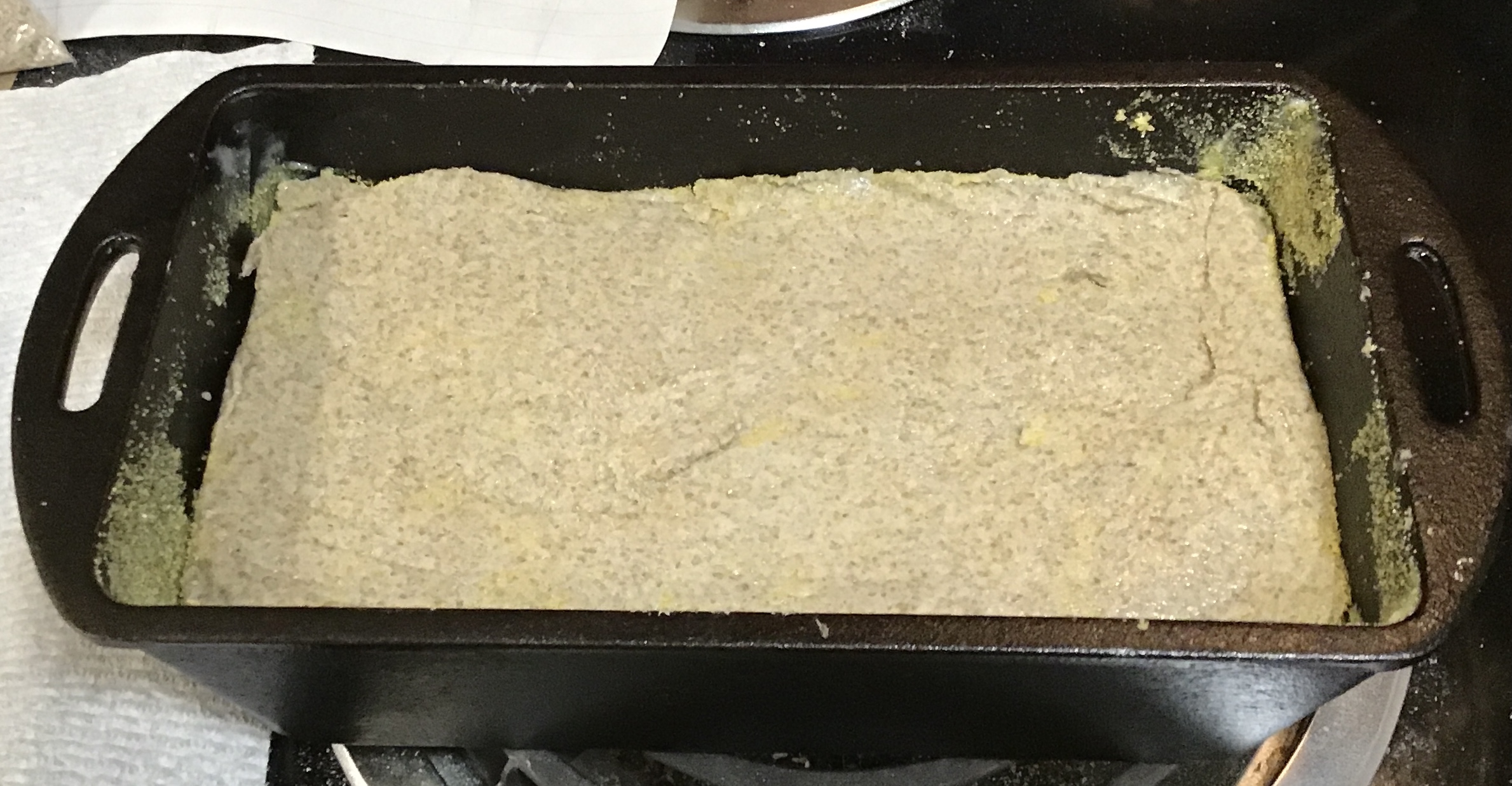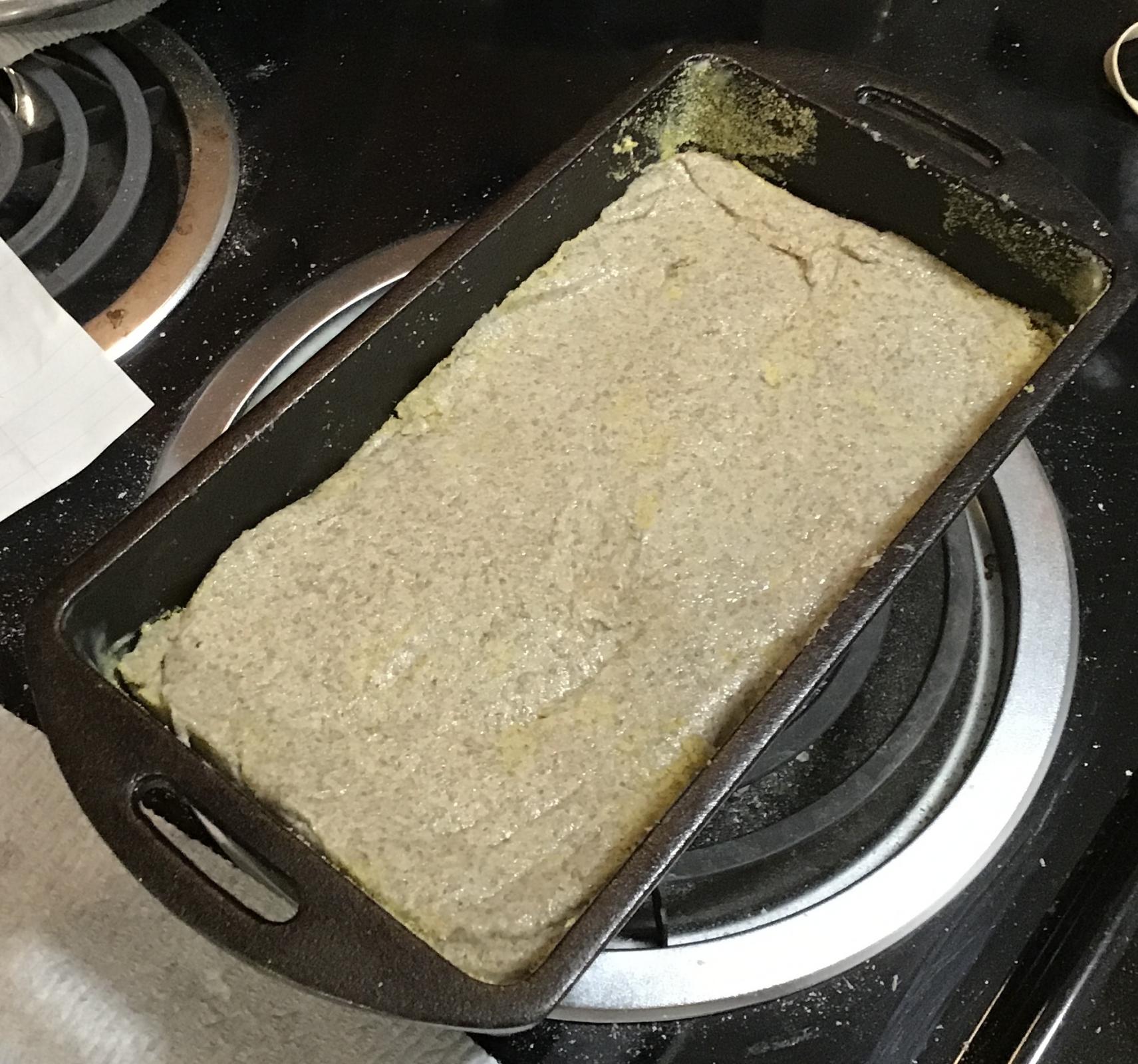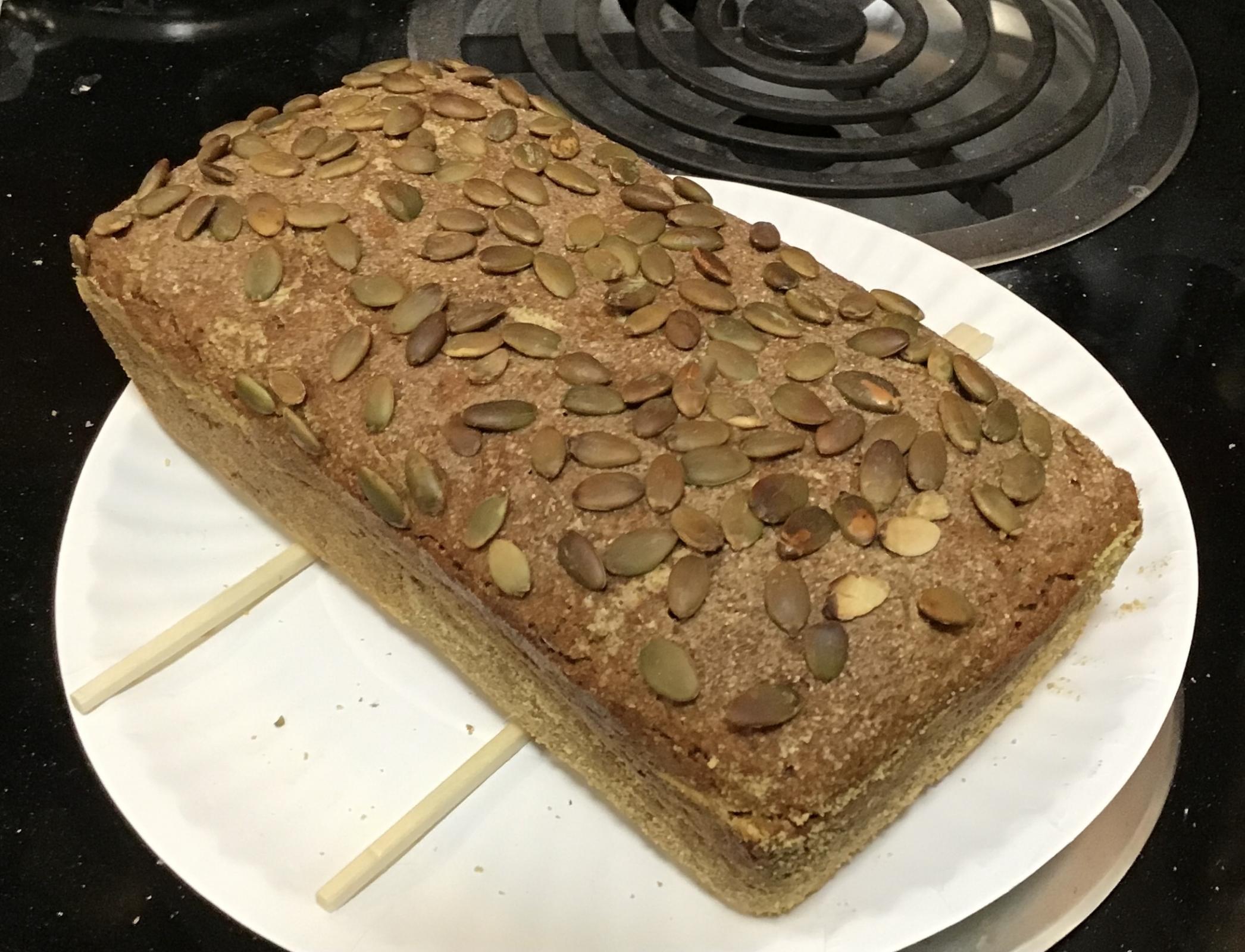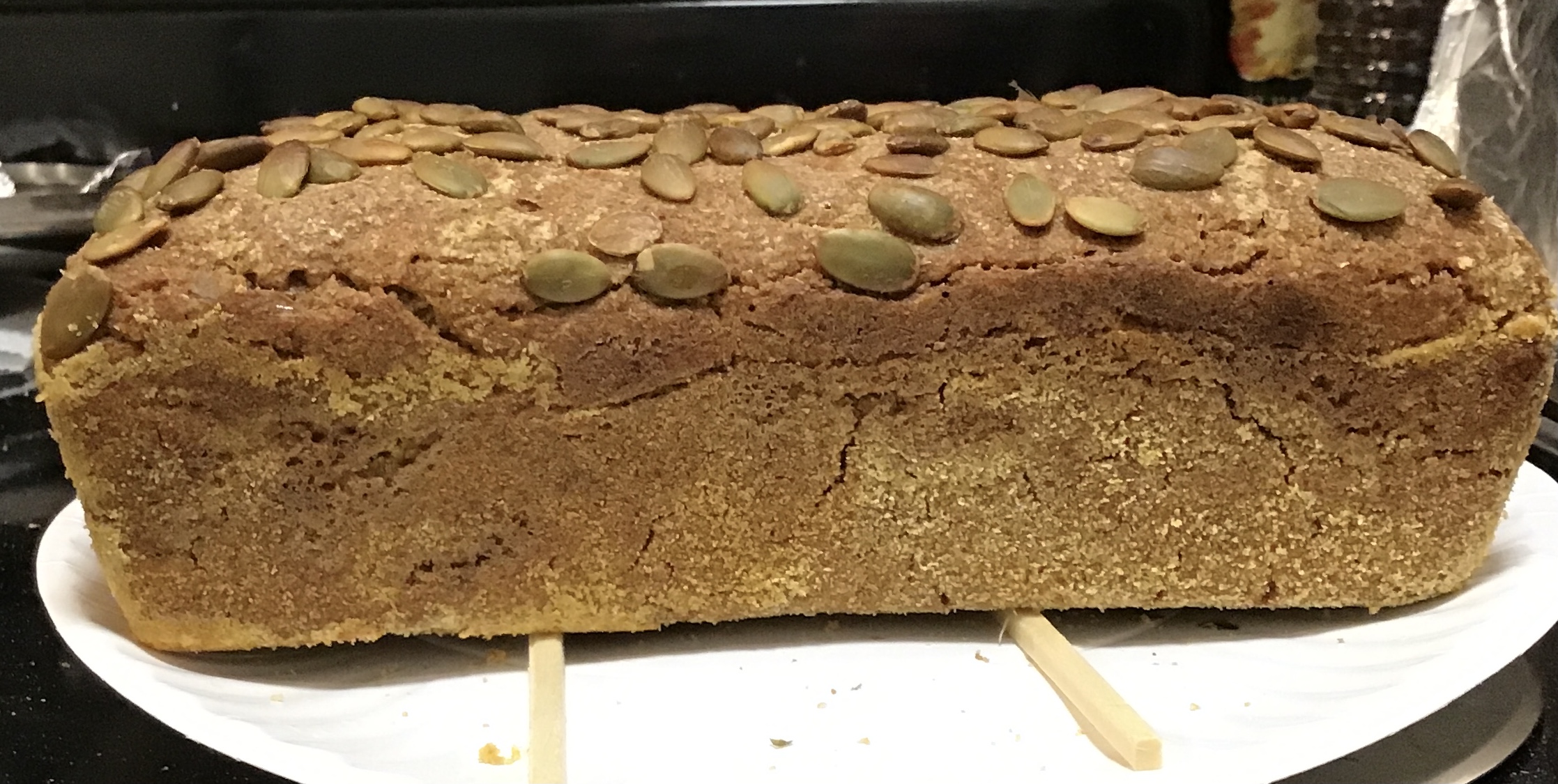Jan. 24, 2022. 82nd bake.
Denisa's rye, take 2. First bake for the Rye Community bake.
Her formula here:
https://www.thefreshloaf.com/node/67054/100-whole-grain-rye-sourdough-bread
My previous bake of it here:
https://www.thefreshloaf.com/node/69634/78th-bake-01062022-100-rye
The goal is to divide her formula by 3 and make one loaf of about 835 g.
Here's the stone-ground whole rye flour that I used for both the pre-ferment and the final dough:
https://www.thefreshloaf.com/node/69305/
Levain:
- 17 g rye starter.
- 140 g spring water.
- 140 g whole rye, Malsena brand from Lithuania.
- 8:45 am to 5:47 pm, at about 71 - 73 F. Levain doubled. Denisa had 10 hours at 70 F.
Final dough:
- All the levain.
- 242 g bottled spring water.
- Mixed.
- 5 g salt.
- 1.5 tsp ground bread spice. The original formula did not call for this. (By volume, prior to toasting: 1 part anise, 1 part fennel, 2 parts caraway, 4 parts coriander. Ground after toasting.)
- 10 g jaggery, plus 6 g water, to substitute for 16 g barley malt syrup.
- Mixed.
- 275 g whole rye, Malsena brand, mixed in at 6:00 pm.
- Covered with plastic wrap.
So bulk is about 1 hour, as per Denisa's recipe.
7:00 pm. - Panned, in a Lodge cast iron loaf pan, part # 4LP. Inside coated with butter, and then dusted with corn meal. (Original formula called for butter with AP flour.) Re-covered with the same plastic wrap.
Here it is immediately after panning:


8:15 pm. Took the loaf pan out of the oven. Started oven preheat to 500 F, highest it will go. Oven is off by 25 F, so 500 on the thermostat setting is 475 F actual.
I forgot to take a photo of it at the end of the proof stage.
I also forgot to put a steam pan in the oven at the beginning of pre-heat. So I applied some water to the top of the loaf, and put on a layer of raw pumpkin seeds to protect the top.
The paper plate is 9" in diameter.


- idaveindy's Blog
- Log in or register to post comments
Looking forward to the results. I think Jaggery has all the molasses still in the sugar so good call for the substitute.
Looks good Dave, had to look up jaggery as I'd not heard of it before.
From wiki
Jaggery is a traditional non-centrifugal cane sugar[1] consumed in the Indian Subcontinent and Southeast Asia.[2] It is a concentrated product of cane juice and often date or palmsap without separation of the molasses and crystals, and can vary from golden brown to dark brown in colour. It is similar to the Latin American panela,[2] also known as piloncillo in Mexico. It contains up to 50% sucrose, up to 20% invert sugars, and up to 20% moisture, with the remainder made up of other insoluble matter, such as wood ash, proteins, and bagasse fibres.[2] Jaggery is very similar to muscovado, an important sweetener in Portuguese cuisine and British cuisine. The Kenyan Sukari ngutu/nguru has no fibre; it is dark and is made from sugar cane and also sometimes extracted from palm tree.[3]
This stuff is more tasty than the normal North American reconstituted brown sugar (ie, they add molasses back into white refined sugar), even "dark brown sugar." I'm not sure on the price comparison though.
It should be available in all well-stocked Indo-Pak stores in North America.
Like Wiki says, I have seen it in various shades of brown, and in different form factors. I purchased the Anand brand because it was the darkest, and had smaller pieces than the more common grapefruit sized ones.
I thought it deserved it's own post. See:
https://www.thefreshloaf.com/node/69797/jaggery-india
for photos.
A little compacted along the bottom, which I take to mean it was at least a little over-fermented. Is that correct? But, not more so than some of the store-bought commercial rye loaves I have purchased.
So far, it's good microwaved with a little butter. Excellent when toasted then buttered, too.
I can't seem to discern the bread spice, so will have to add more. As is, it's a good base to let the toppings shine.
This was cut with a straight-edged (not serrated) knife.
That crumb looks great to me Dave. I find there is always some density in pan loaves along the bottom and sides of the loaf because of the resistance to expansion in those areas.
Yours tears the loaf just like mine. I believe that will cut far easier and show a better crumb with a non serrated bread knife. Looks like a lovely soft crumb with nice caramel notes.
Very nice, Dave.
I'm not up to speed on knifery. I thought "bread knife" means it's serrated.
What are the defining characteristics of a bread knife that is not serrated?
Thx.
I have the same problem when it comes to rye as my serrated knife tears the loaf. It get's better as the loaf ages over a couple of days but the first two days it doesn't cut so nicely.
Mini advised a straight edged knife and like you I didn't think there were different kinds of bread knives.
https://www.thefreshloaf.com/comment/500390#comment-500390
I just now found this:
https://www.webstaurantstore.com/guide/538/types-of-knives.html